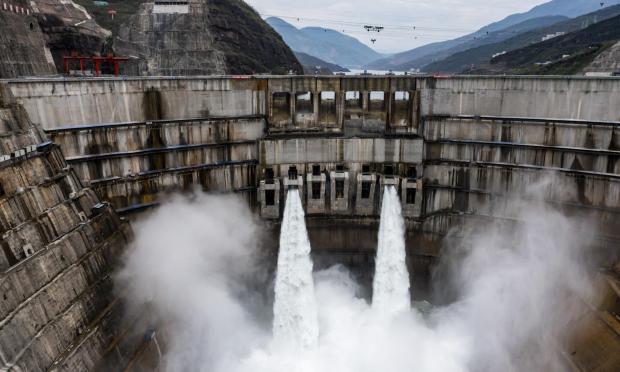Accelerating towards Jinping’s goal of achieving carbon neutrality by 2060, China has completed construction of the world’s second largest hydropower dam in time for the CCP’s centenary celebrations, despite glaring concerns of environmental destruction to local habitat, flora & fauna and endangering local species of the finless porpoise along the Yangtze River.
The hydropower dam termed as Baihetan is an ambitious 289 meter project located in Southwest China with an installed capacity of total 16,000 MW which enables the hydropower station to generate electricity that can provide power to an estimated 500,000 people each day once for an entire year.
China also houses the world’s largest dam in terms of power generation, i.e., the Three Gorges Dam, a $28.6 billion project that uprooted a million people and more situated on the Yangtze River. The Three Gorges dam has often been subject to severe criticism from environmental experts who have question the actual efficacy of such a large dam, and have raised concerns as to its ability to prevent floods as China has justified building such dams by stating flood control among some of its benefits. China has been on a dam building spree amidst the growing energy needs of its huge population.
Additional concerns for the Baihetan dam have stemmed from its precarious placement on the border between China’s Yunnan and Sichuan provinces, an earthquake prone area. Multiple environmental groups see the Baihetan dam as a direct threat to rare plants and animals that reside on the Yangtze River. A paper published by the Elsevier’s Science of the Total Environment journal expressed their concerns of a change in the composition of sediment in the water where the dam has been constructed. The writers of the paper explained that this change in composition could potentially accelerate a large scale hydro physical catastrophe that affects human health and increases such risks.
Building a large hydropower damn comes at certain obvious costs, the most threatening being wide scale displacement of people and endangering of indigenous plants and animal species locally situated, all of which happened with the operation of the Three Gorges dam. Experts claim that the world’s second largest dam faces similar consequences as well, for China has a reputation of hurrying large scale infrastructure projects without proper environmental clearances and assessment studies.
A tropical medicinal specialist at the George Washington University in Washington DC had described the Three Gorges dam as being the “granddaddy of all changes”. The specialist warned of increased waterborne diseases and a rise in landslides, all of which did not stop China from assessing the efficacy of its dam. In November 2007, the ground near the entrance to a railway tunnel near a tributary to the Three Gorges dam collapsed, causing a landslide that killed 30 people on a bus.
There seem to be credible reasons to worry similar after effects of operating the Baihetan dam. Local communities face imminent mass displacement which has raised concerns for neighboring countries.
Xi Jinping’s incredulous goal of bringing its carbon emissions to a complete naught has caused China to invest heavily into renewable sources of energy to make the country completely carbon neutral by 2060. The challenges that lie ahead for China in rapidly reducing its carbon footprint goes beyond amassing massive investment and heavy borrowing, as post recovery from the pandemic, Jinping has shifted focus on increasing industrial manufacturing and infrastructural scaling.
Environmental concerns have almost always been secondary to China’s manufacturing spirit, and its second largest hydropower project seems no different.















